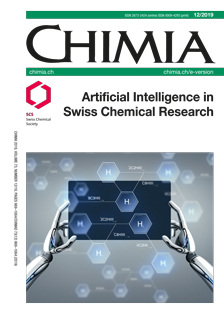Exploring Machine Learning Tools for the Prediction of the Stability of New Togni-type Reagents
DOI:
https://doi.org/10.2533/chimia.2019.990PMID:
31883549Keywords:
Machine learning, Togni-type reagentsAbstract
In the context of the prediction of the (in-)stability of chemical compounds using machine learning tools, we are often confronted with a basic issue: Whereas much information is available on stable (existing) compounds, little is known about compounds that might well exist, but that have not yet been successfully synthesized, or compounds that are inherently unstable (kinetically and thermodynamically). In the search for Togni-type reagents, many of them kinetically instable, the stability of the prospects can be assessed based on the transition state for the conversion to their non-hypervalent inactive isomer. In earlier work, we determined the barriers of conversion for over one-hundred reagents, still not enough information to train a tool such as a vector support machine. Here, instead, we focus on the early intermediate structures expressed along the isomerization pathway, i.e. transition state searches are replaced by finding (local) minima. Based on an array of 382 Togni-type reagents whose behaviour was known in advance, we show that it is possible to have the machine predict the intermediate form expressed. The approach introduced here can be used to make predictions on the stability and possibly also the reactivity of Togni-type reagents in general.Downloads
Published
2019-12-18
Issue
Section
Scientific Articles
License
Copyright (c) 2019 Swiss Chemical Society

This work is licensed under a Creative Commons Attribution-NonCommercial 4.0 International License.
How to Cite
[1]
Chimia 2019, 73, 990, DOI: 10.2533/chimia.2019.990.







